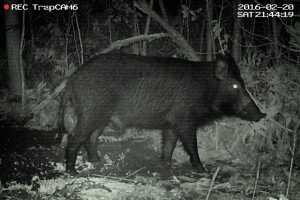You Swine!
 RODNEY WOODSON never set out to be a pig trapper. He joined the Tennessee Wildlife Resources Agency because he was passionate about conserving water birds. But that was before the hogs rocked up, with their high libidos and low cunning.
RODNEY WOODSON never set out to be a pig trapper. He joined the Tennessee Wildlife Resources Agency because he was passionate about conserving water birds. But that was before the hogs rocked up, with their high libidos and low cunning.
Across the world, and especially in the southern US, feral pigs are a problem. Marauding hordes of swine are destroying crops and sensitive natural environments, causing traffic accidents and spreading disease and parasites. They have even dug up cemeteries. The US Department of Agriculture estimates the damage at $1.5 billion a year.
As so often with invasive species, this is a problem of our own making. Wild pigs were introduced to the US by Spanish settlers hundreds of years ago, but weren’t a cause of widespread concern until the 1990s, says zoologist Jack Mayer at the Savannah River National Laboratory in South Carolina, when cable TV ads began promoting the animals as an exotic alternative hunting target to turkeys and deer. In 1999, Tennessee established a hog hunting season, and soon enterprising landowners were stocking up. That ushered in “an explosion of new hog populations” across the state, says Chuck Yoest, coordinator of the Tennessee Wild Hog Eradication Action Team, part of the agency that Woodson works for. In 2011, the state reclassified pigs from big game to destructive pests.
I wrote about the pig menace for New Scientist; you can read the article here.